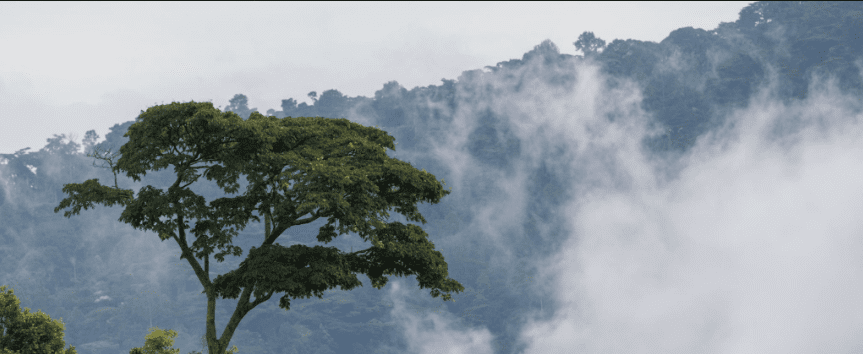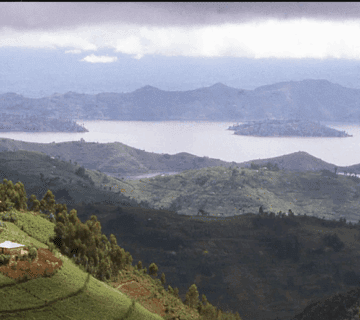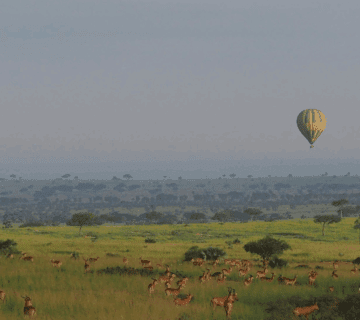Can You Hike in Uganda During the Rainy Season?
One question often lingers in the minds of travelers: Can You Hike in Uganda during the rainy season? The answer is a resounding yes—but with the right preparation, mindset, and a spirit of adventure. Hiking in Uganda during the wet months is not only possible but can also be an incredibly rewarding experience. This article explores why you should consider trekking during the rainy season, the challenges you may face, and how to turn them into opportunities for an unforgettable journey.
Why Hike in Uganda During the Rainy Season?
1. Lush, Vibrant Landscapes
Uganda’s rainy seasons (March-May and September-November) transform the country into a lush, green wonderland. The forests become denser, the waterfalls more powerful, and the hillsides burst with wildflowers. If you’re a nature lover or photographer, this is the best time to witness Uganda at its most vibrant.
2. Fewer Crowds
Many travelers avoid hiking during the rainy season, meaning you’ll have Uganda’s most famous trails almost to yourself. Imagine standing at the summit of Mount Elgon or trekking through Bwindi without the usual crowds—just you, the wilderness, and the symphony of nature.
3. Lower Costs
With fewer tourists, many lodges and tour operators offer discounted rates. This makes the rainy season an excellent time for budget-conscious adventurers to explore Uganda’s best hiking destinations without breaking the bank.
4. A Unique Adventure Challenge
Hiking in the rain tests your resilience and adaptability. Slippery trails, muddy paths, and unpredictable weather push you out of your comfort zone—making the journey even more rewarding when you conquer it.
Challenges of Hiking in the Rainy Season (And How to Overcome Them)
While hiking during Uganda’s wet months has its perks, it also comes with challenges. Here’s how to tackle them like a pro:
1. Slippery and Muddy Trails
Rain turns many of Uganda’s trails into slippery, muddy routes. This can slow you down and increase the risk of falls.
Solution:
-
Wear sturdy, waterproof hiking boots with excellent grip.
-
Use trekking poles for better balance.
-
Take smaller, deliberate steps to avoid slipping.
2. Leech Encounters
In rainforest areas like Bwindi and Kibale, leeches are more active during the rainy season.
Solution:
-
Apply salt or insect repellent around your socks and shoes.
-
Wear leech socks or tuck your pants into your boots.
-
Carry a small salt sachet to remove leeches quickly if they latch on.
3. Heavy Downpours and Sudden Storms
Rain can be intense, sometimes turning into thunderstorms, especially in mountainous regions.
Solution:
-
Pack a high-quality waterproof jacket and rain cover for your backpack.
-
Start hikes early to avoid afternoon downpours.
-
Check weather forecasts and be flexible with your plans.
4. Limited Visibility
Fog and mist can obscure scenic views, particularly in high-altitude areas like the Rwenzoris.
Solution:
-
Embrace the mystical atmosphere—it adds a unique charm to the hike.
-
Be patient; the clouds often part, revealing stunning vistas.
Best Hiking Destinations in Uganda During the Rainy Season
Not all trails are equal when it comes to rainy-season hiking. Here are some of the best places to explore:
1. Bwindi Impenetrable Forest
Famous for gorilla trekking, Bwindi is even more magical in the rain. The forest is alive with sounds, and the mist adds an enchanting aura. Just be prepared for muddy, challenging paths.
2. Rwenzori Mountains (Mountains of the Moon)
For experienced hikers, the Rwenzoris offer a thrilling rainy-season adventure. The trails are tougher, but the waterfalls and alpine vegetation are at their peak beauty.
3. Mount Elgon
With its gentler slopes and stunning caves, Mount Elgon is a great rainy-season alternative to more technical hikes. The Sipi Falls along the trail are particularly spectacular after rainfall.
4. Lake Bunyonyi
For a more relaxed hike, the terraced hills around Lake Bunyonyi offer breathtaking views, and the rain enhances the lake’s serene beauty.
Essential Packing List for Rainy Season Hiking
To make the most of your adventure, pack wisely:
✔ Waterproof gear (jacket, pants, backpack cover)
✔ Quick-dry clothing (avoid cotton—it stays wet)
✔ Sturdy hiking boots (waterproof with good traction)
✔ Trekking poles (for stability on slippery paths)
✔ Dry bags (to protect electronics and essentials)
✔ Insect repellent & salt (for leeches)
✔ Snacks & hydration (energy bars, water purifiers)
Mindset: The Key to Enjoying Rainy Season Hiking
The biggest barrier to hiking in the rain isn’t the weather—it’s your mindset. Instead of seeing the rain as an obstacle, embrace it as part of the adventure. Some of the most memorable travel experiences come from unexpected challenges.
1. Celebrate Small Victories
Every slippery step you take is a testament to your determination. When you finally reach your destination, the sense of accomplishment is unparalleled.
2. Connect with Nature on a Deeper Level
Rain brings forests to life—listen to the sound of droplets on leaves, breathe in the earthy scent of wet soil, and watch how animals adapt to the weather.
3. Learn Resilience
Hiking in tough conditions builds mental strength. If you can trek through Uganda’s rainy season, you can handle life’s other challenges with the same grit.
Can You Hike in Uganda During the Rainy Season? Absolutely!
Hiking in Uganda during the rainy season is not just possible—it’s an extraordinary experience for those willing to embrace the adventure. With the right preparation, gear, and attitude, you’ll discover a side of Uganda that few travelers see. The lush landscapes, the solitude, and the raw beauty of nature in the rain make it all worthwhile.
So, pack your rain gear, lace up your boots, and set out on a journey that will test and reward you in ways you never imagined. Can You Hike in Uganda during the rainy season? Yes—and you’ll come back with stories that last a lifetime.
The trail is calling. Will you answer?



